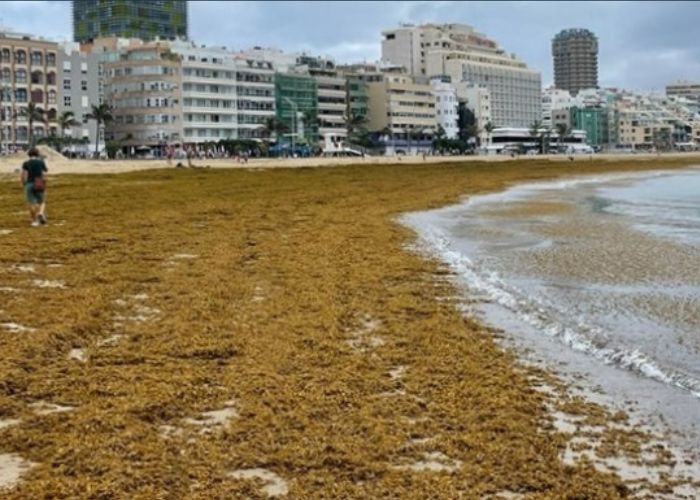LAS PALMAS DE GRAN CANARIA – Last Sunday, popular beaches in the Canary Islands, such as Las Canteras in Las Palmas or Playa de Gran Tarajal in Fuerteventura, were completely covered in brown algae.
Tourists and swimmers on the busy Canary coast, which is now in its peak season, wondered about the origin of this plant species that was urgently removed by the municipal beach cleaning services.
“The algae that arrived in Las Canteras are brown algae (Lobophora variegata). This species is common in Gran Canaria, especially at this time of year,” said Fernando Tuya, professor of marine sciences at the University of Las Palmas de Gran Canaria. Canaria (ULPGC).
He explains to Tourinews how the presence of strong winds and waves tear the plant mass from the subsurface because it is weak (these algae have a life cycle of only one year), and then drags it to coastal areas. Moreover, this restarts the system and new brown algae germinate. “From October-November to April-May, this phenomenon will occur,” Tuya concluded.
What are the consequences of the alga?
“You should not confuse this brown alga with the ‘Seba’. In the Canary Islands we usually put a lot of plant material in the same bag and call everything Seba, but Seba is a plant, and the lobophora is an alga. The Seba has its seeds and its flowers, and the algae reproduce by spores,” explains ULPGC biologist, Rafael Robaina.
The algae must be removed from the beaches quickly. Because it is plant material, a large amount together can quickly go into a state of putrefaction. This causes bad odours and attracts insects. That combination scares off tourists.
Cleaning work
Fortunately for those tourists, cleaning is quick. Ciudad del Mar shared footage of the algae removal process. These are treated as waste and dumped at the landfill Salto del Negro (Gran Canaria). Cleaning work has also started in Fuerteventura. In this case, Playa de Gran Tarajal is overrun with as yet unidentified algae.
Also read: Jet2 doubles its commitment to the Canary Islands


